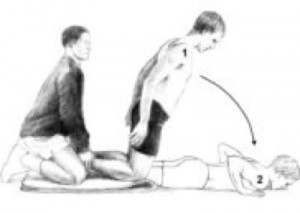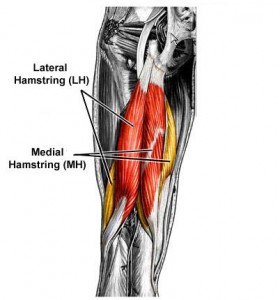Brian Schiff’s Blog
Injury Prevention, Sports Rehab & Performance Training Expert
Well, Thanksgiving is upon us in 2011. I want to wish you and your family a wonderful holiday. In today’s post I will review a November 2011 article in the American Journal of Sports Medicine that looked at the effect of the Nordic hamstring exercise on hamstring injuries in male soccer players.
For those not familiar with Nordic hamstring exercises, see the photo below:

In this randomized trial, the researchers had 54 teams from the top 5 Danish soccer divisions participate. They ended up with 461 players in the intervention group (Nordic ex) and 481 players in the control group. The 10 week intervention program was implemented in the mid-season break between December and and March because this was “the only time of the year in which unaccustomed exercise does not conflict with the competitive season.
The trial was conducted between January 7, 2008 and December 12, 2008 with follow-up of the last injury until January 14, 2009. In the intervention group, all teams followed their normal training routine but also performed 27 sessions of the Nordic hamstring exercises in a 10 week program (as follows)
- Week 1 – 2 x 5
- Week 2 – 2 x 6
- Week 3 – 3 x 6-8
- Week 4 – 3 x 8-10
- Weeks 5-10 – 3 sets, 12-10-8 reps
- Weeks 10 plus – 3 sets 12-10-8 reps
The athletes were asked to use their arms to buffer the fall, let the chest touch the ground and immediately get back to the starting position by pushing with their hands to minimize the concentric phase. The exercise was conducted during training sessions and supervised by the coach. The teams were allowed to choose when in training it was done, but they were advised not to do it prior to a proper warm-up program.
And the results…..
So, I have been swamped with work and marathon training, hence the recent delay in a new blog post. Well, yesterday during a short 3 mile run (I am in taper mode with a 10/17 event) I experienced an acute left hamstring strain.
Hamstring strains are common and can produce incredible pain and limit function. Most hamstring strains occur as the swing leg is coming forward and the knee is nearing full extension. Essentially, it is a stretch type injury as the hamstring works to decelerate the momentum of the lower leg.
Injuries may be casued by inadequate warm-up, a sudden increase i training intensity/volume, fatigue, stiffness, weakness or muscle imbalances. A prior injury may also increase your risk for re-injury.

I have been running for years and am 5 months into my marathon training, so why now? I honestly think it may be related to my speed yesterday. My body naturally leans toward a 7:25 pace, but when I looked down at my Garmin yesterday at the point of pain, it said 6:54. Yikes! I was 1.25 miles into the short run.
I decided to keep running and slow my pace back to 7:30. While I was able to complete the run, my lower hamstring was very tight and sore after the run. Obviously, I have been icing regularly the last 24 hours. No running today either. I anticipate a quick recovery since the strain is mild and I am very fit. But, what is the best way to prevent re-injury?
I have a quick article summary from the Journal of Sports & Orthopedic Physical therapy Journal for you to read that underscores how important functional movement rehab is in comparison to just static stretching and strengthening.
Click here to read the summary of the journal article
Now, with respect to running, agility may not be necessary. Running is fairly linear (straight line) so what may be more important to gage capacity to return to running may be some of the following:
- Absence of pain with active knee straightening
- Absence of pain with walking
- No pain with single leg hopping
- Minimal to no muscle belly tenderness
In the end, you will need to let pain guide you. Some will return faster than others, but inside of 21 days (the end of the subacute healing phase) you must be aware of the fragility of the tissue as it heals. I am confident this will not derail my marathon, but the lesson learned is to watch your starting pace as it may lead to some muscle strain.

